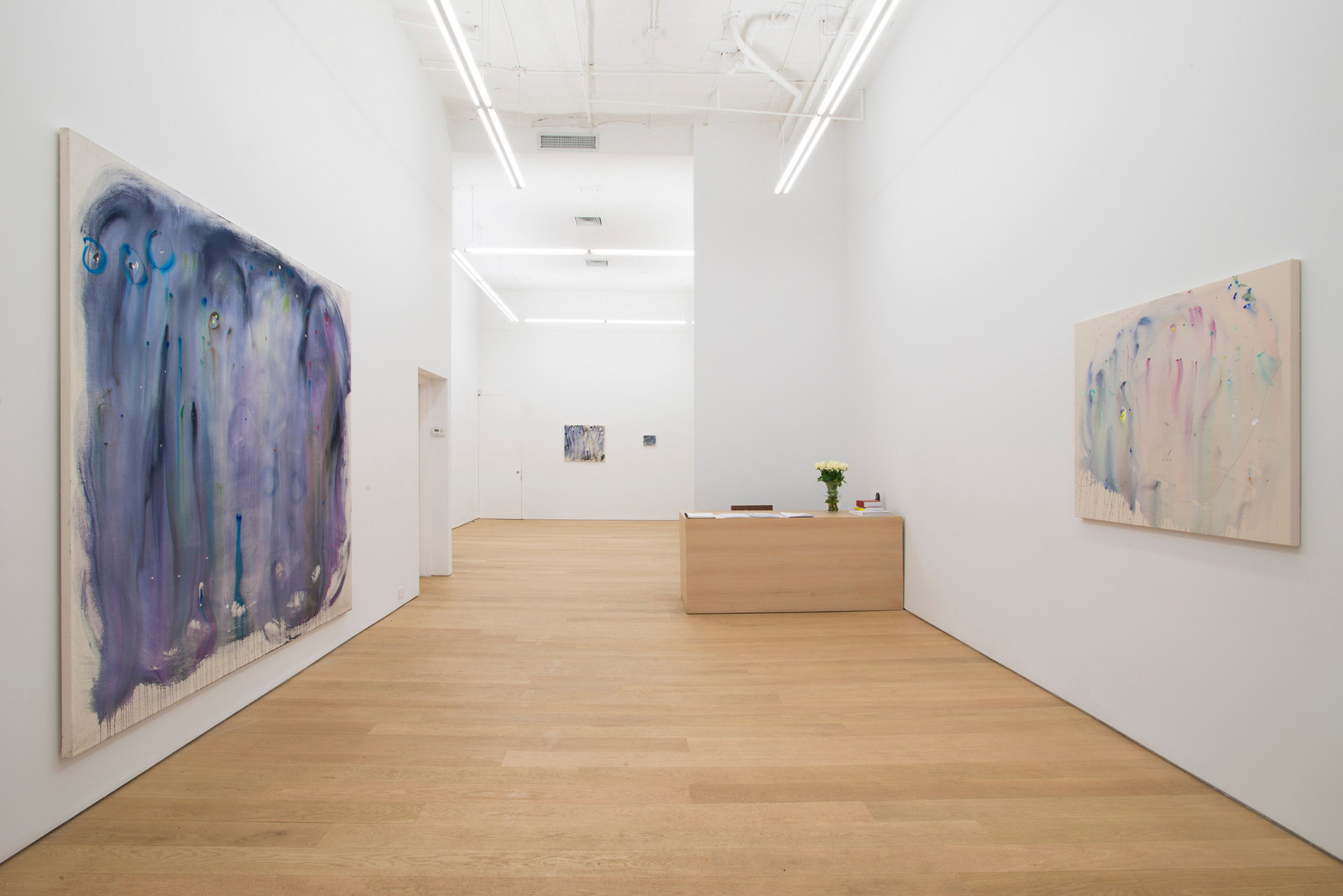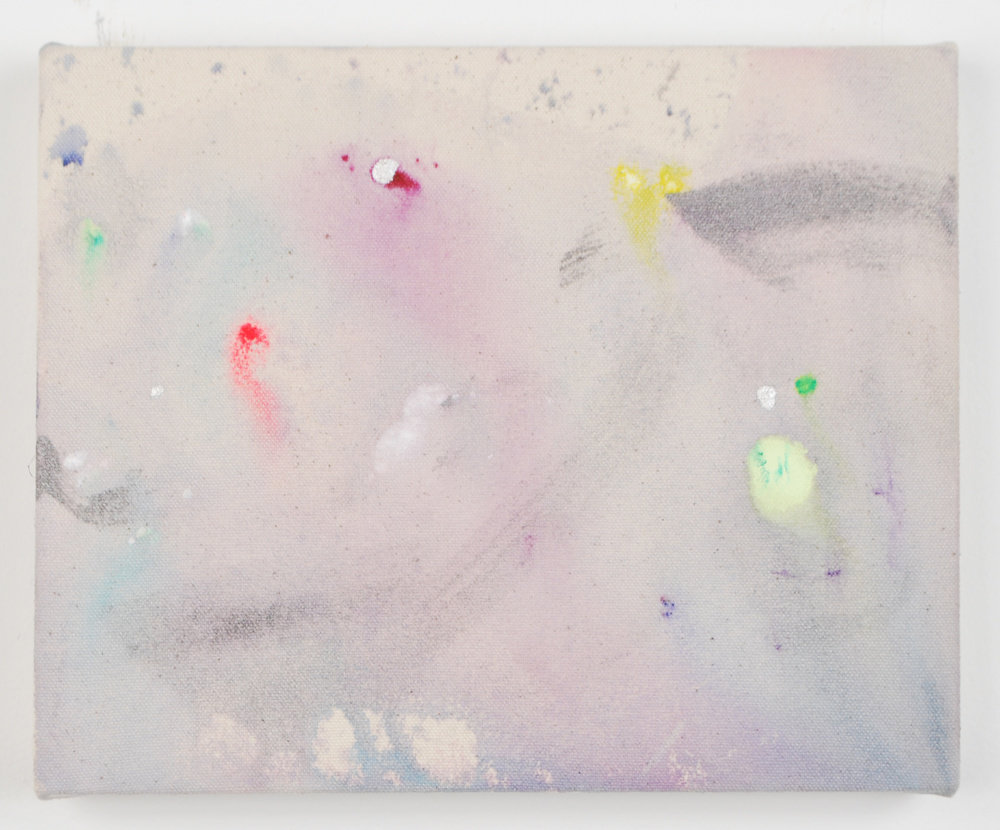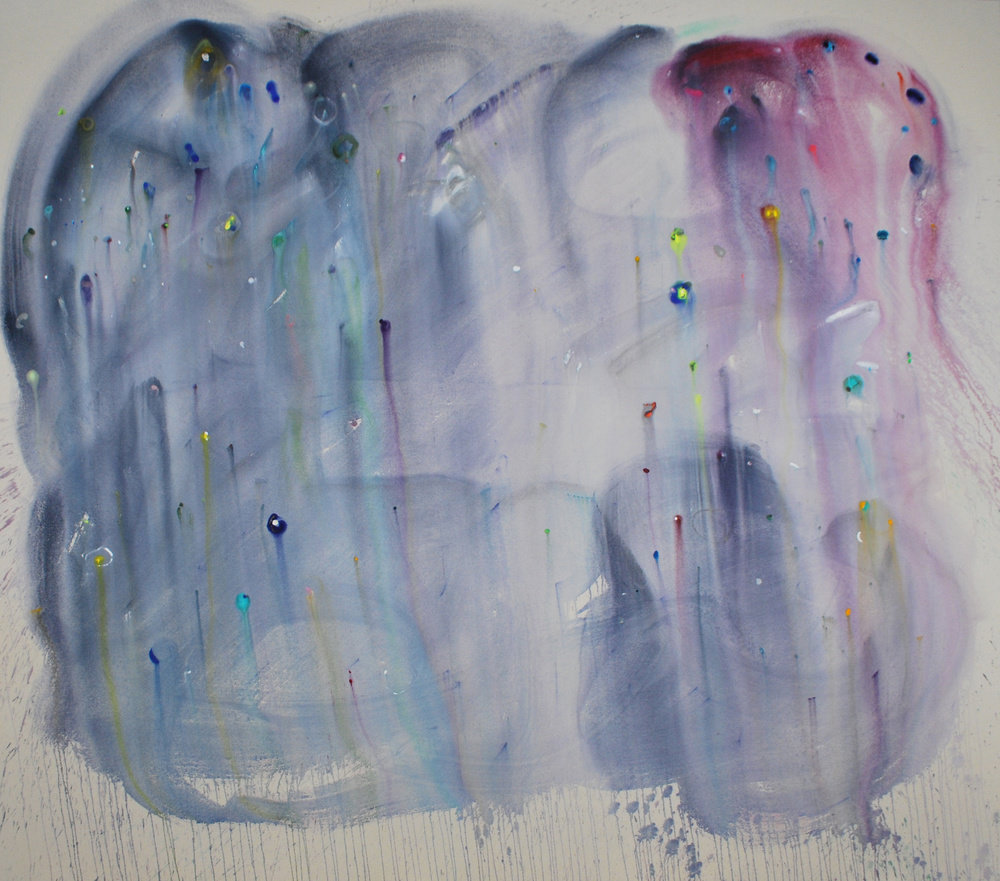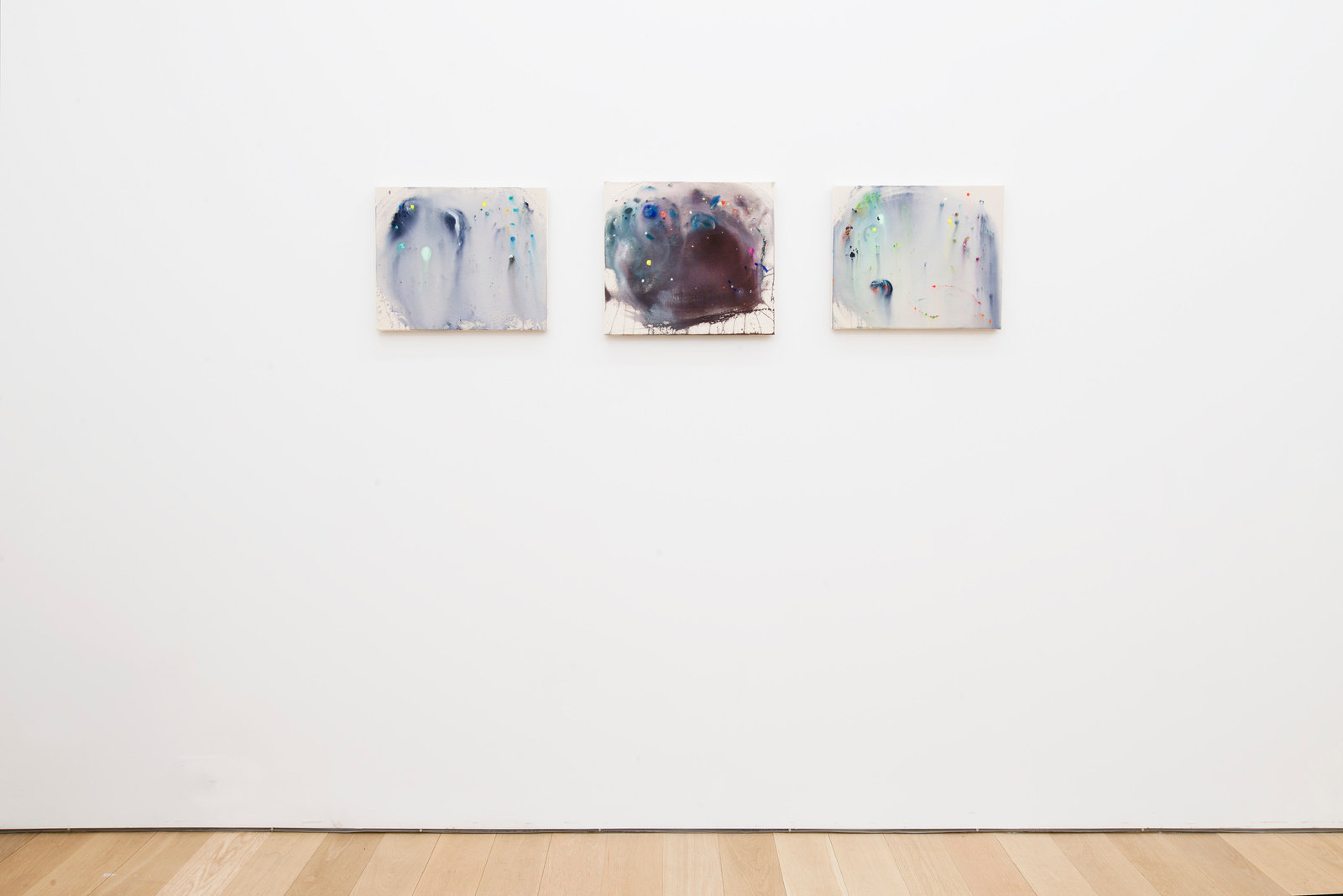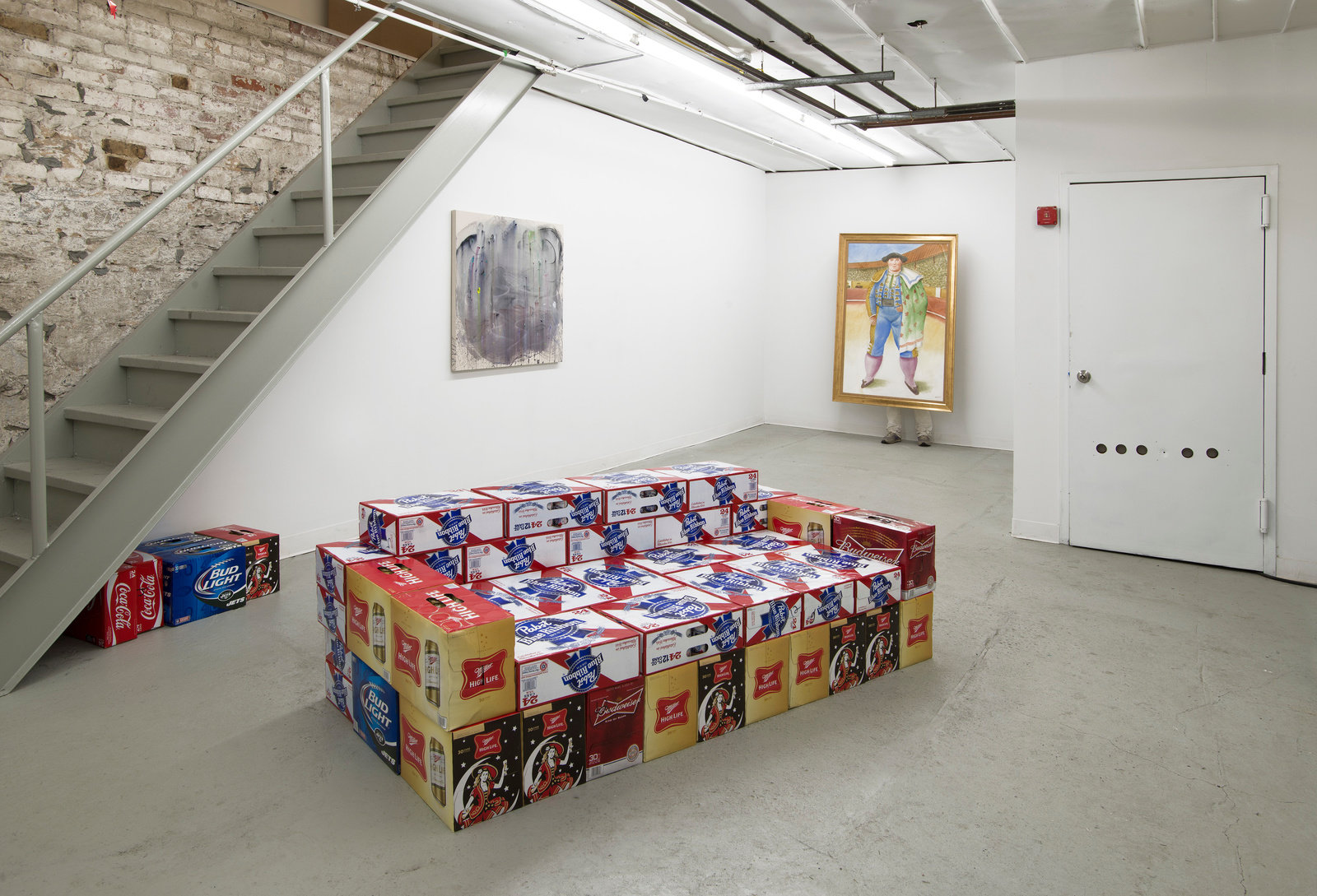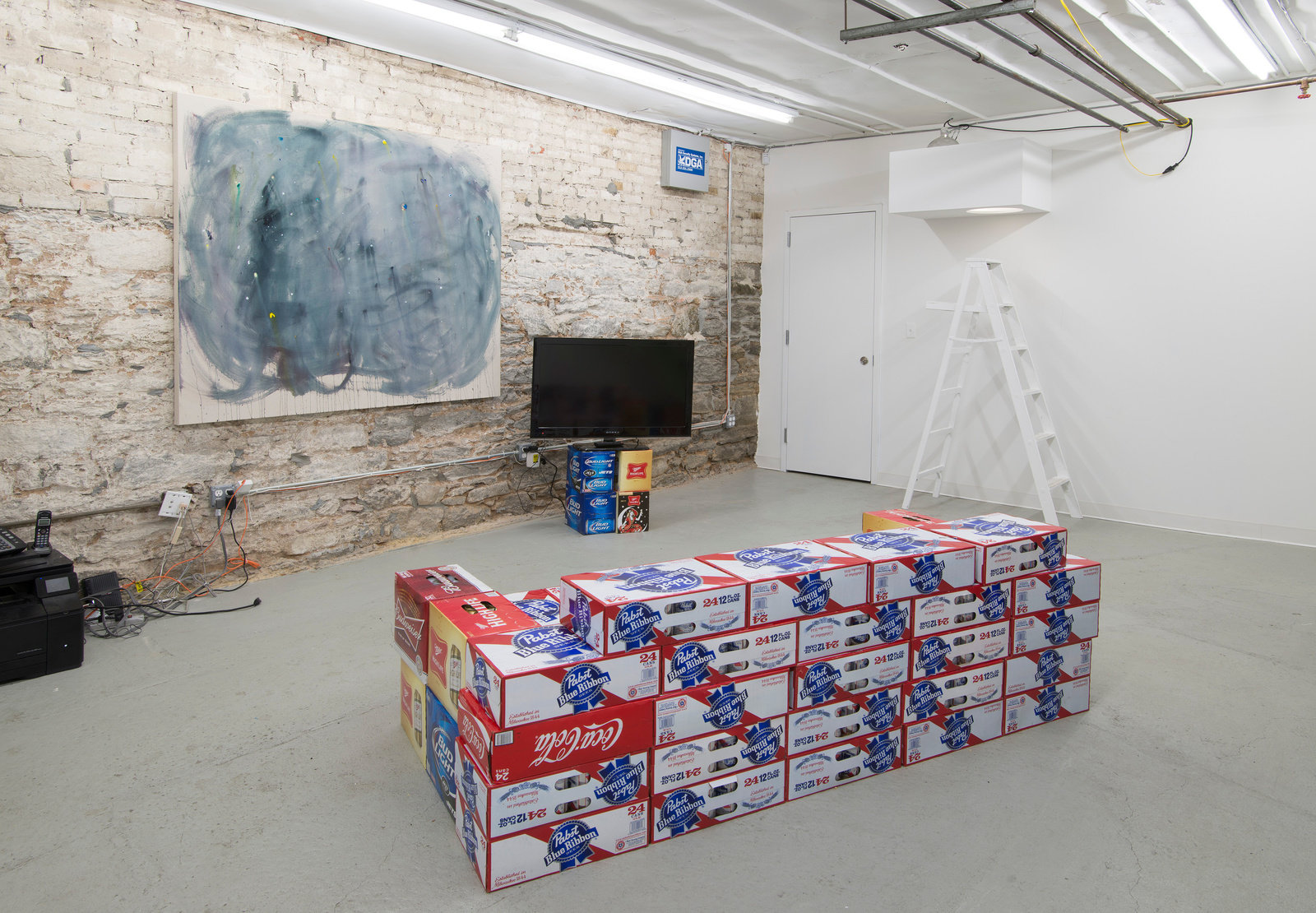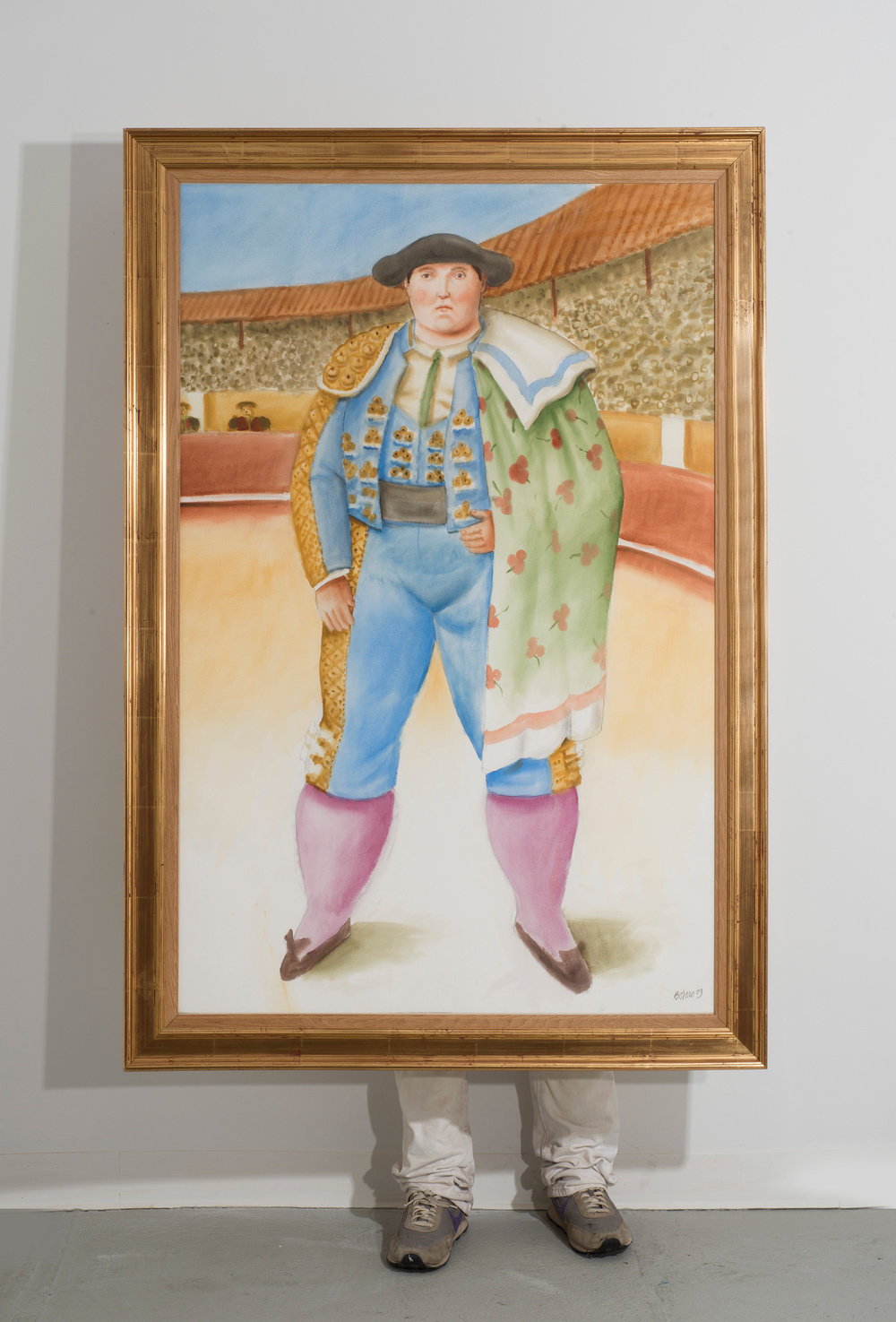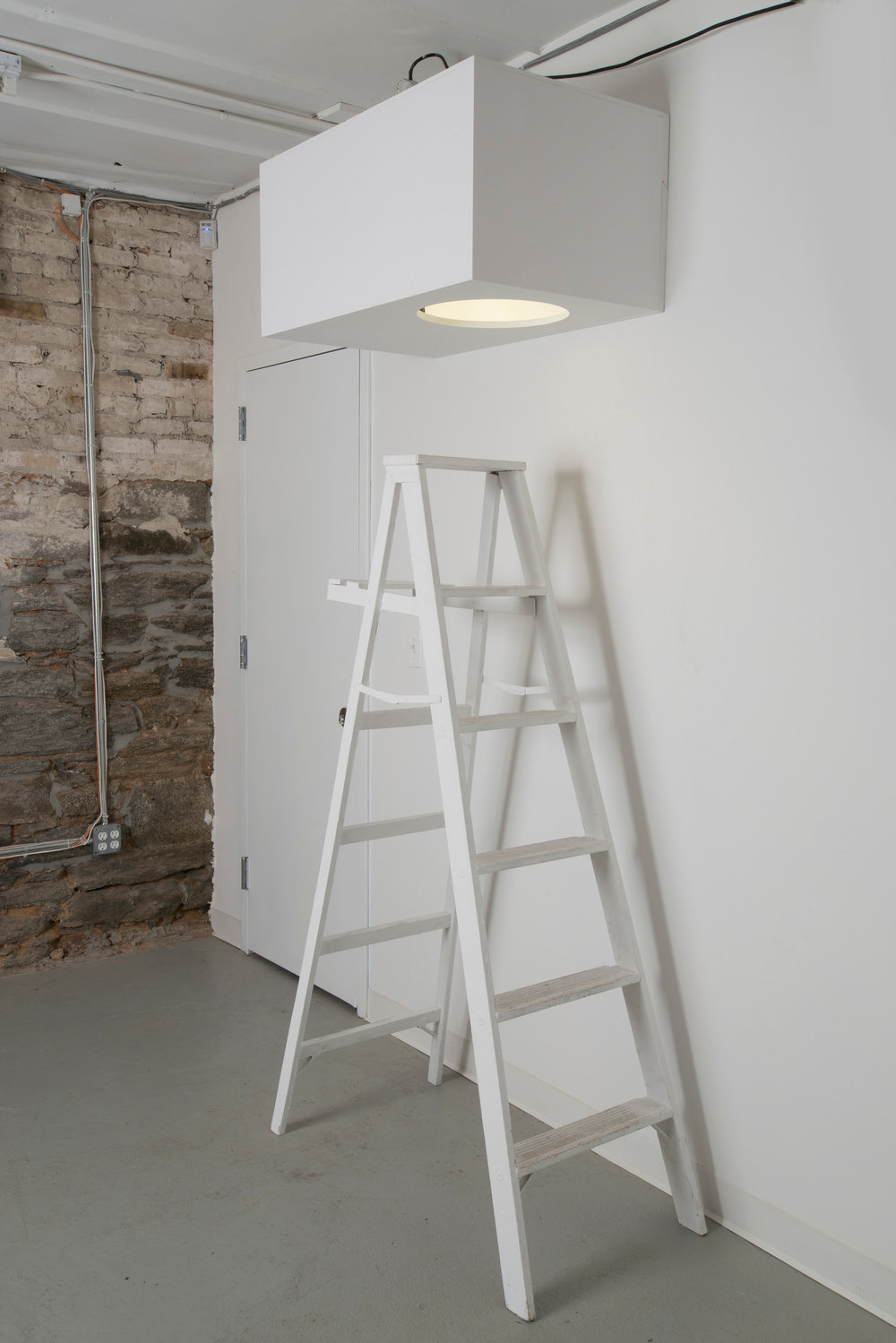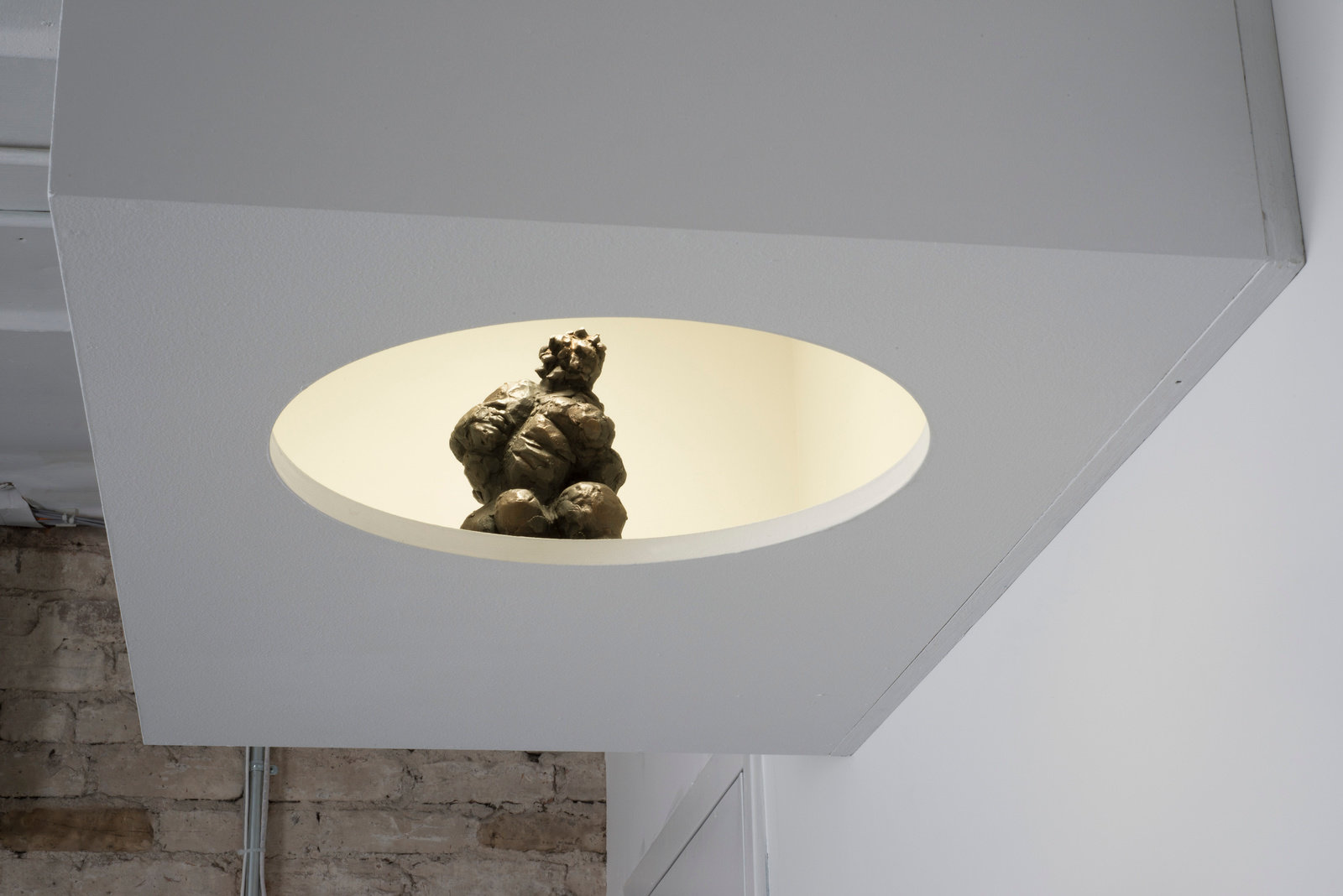Marlborough is proud to present a solo exhibition by Milwaukee-based artist John Riepenhoff, featuring a collection of plein air paintings, depicting the artist’s observations of the night sky, executed with only the aid of a small lantern in the Northern Woods of Wisconsin as well as in total darkness on other open rooftops and beach fronts around the world.
Wisconsin has a longstanding relationship with naturalists. Aldo Leopold, John Muir, Audubon and the poet Antler have all made their home here, to wonder upon the ecological richness of our Upper Midwest. Noted hunters like Ernest Hemingway and Jim Harrison (who are also known for other arts) have famously plied the woodlands of Wisconsin’s promontory neighbor (Upper Michigan, or in the local vernacular, the ‘U.P.’), seeking zones where it’s still possible to commune with the genuinely mysterious, unanswerable qualities of the woodlands.
John Riepenhoff joins this list, though coming at things from a somewhat different angle. No doubt influenced by his father Bob, who for the better part of his life was the outdoors columnist for Milwaukee’s daily newspaper, Riepenhoff saw his family’s northerly-situated cabin as an ideal spot to make art.
On a clear night in 2010, he revived his old penchant for painting en plein air, and set up an outdoor studio underneath the blanket of stars, which crowd the night skies here far from the consuming glow of cities. The ensuing process intrigued him as much as the end results: he literally could not see what he was doing, but for a tiny light on his tools to make sure he was grabbing a paint brush rather than a garter snake. In conditions of darkness the eye’s rods and cones translate color into grey tones, and in turn, the upper atmosphere causes distant stars and galaxies to read as colors, usually red or blue if not the standard bright yellow, and as ‘twinkling’ or pulsating with fitful energy. As his eyes grow accustomed to the light conditions, Riepenhoff is able to see into the depths of expanse between the stars, as well, picking up on the subtle variations in what otherwise looks like the skies’ solid blue mantle to a less interrogatory eye.
Confronting what he has wrought in the light of morning, the painter recognizes the known unknown: the gestures he has made read as familiar, but the colors, effects and overall splay of the painting are wholly new, and cause sensations from the queasy unease of unintended consequence to plain awe. A painter gains by her vulnerability, and Riepenhoff’s enforced distancing from his process allow him to take his paintings at face value, as other viewers would. In the end, of course, he is responsible for the thing made, but the method of placing control just out of reach twists the traditional goals of representational into a more Cagean, chance-operational territory. Overnight, as these acrylic paintings dry, gravity drags their thick pigment glops downward, and osmosis spreads the watery parts into, around, over and through each other. The final results literally speak for themselves.
Traveling often in his role as gallerist, in support of the artmaking practices of other artists, Riepenhoff decided to bring his own tools along on the road. The plein air studio is traditionally portable, making the vast wonders of nature available to the painter. Riepenhoff embraces the irony of traveling far and wide to paint what is exactly and so easily accessible in his own backyard, the selfsame subject of sky, more or less the same sky from any point on the planet. As he wrote recently, “I go to great lengths to set-up my studio in extreme places to paint something I can see from my back yard, wtf?”
(Astronomers and astrologers would point out that the star-formations on Riepenhoff’s canvases could actually denote the relative time and place of their making, but he himself takes what’s given him—as with the results. The plein air painter must accept changes in conditions as fodder for subject matter, as did Monet, but the value shifts here are not simply of colors and shadings. Riepenhoff genuinely wants to not-know in his painterly process, in order to produce something equal to its subject.)
That a night-sky painting done in Glasgow resembles one made later in Tokyo is a given, though his responsiveness to local conditions (light pollution, tropical cloud-cover, smog) is evident in comparing, say, a New York rooftop painting to one made on the South Beach oceanfront. But the sky really is the same sky from anywhere, and these paintings finally become about the painter looking up, then un-looking down at the canvas, the use of the self and its responsiveness to present conditions as a primary tool.
— Nicholas Frank
Milwaukee, WI, 2013
Works
